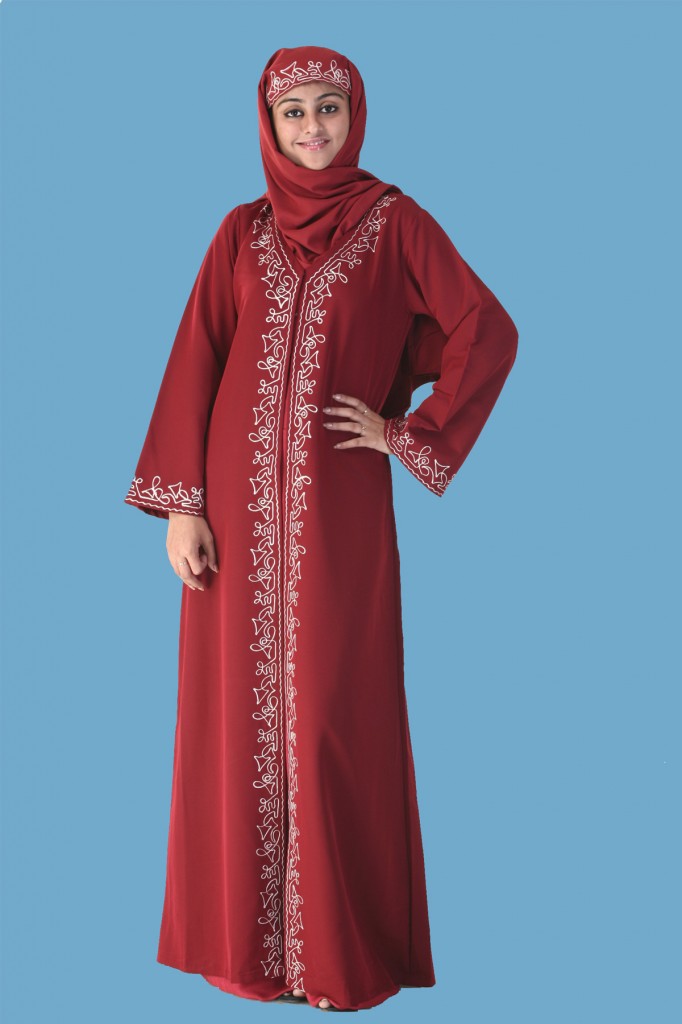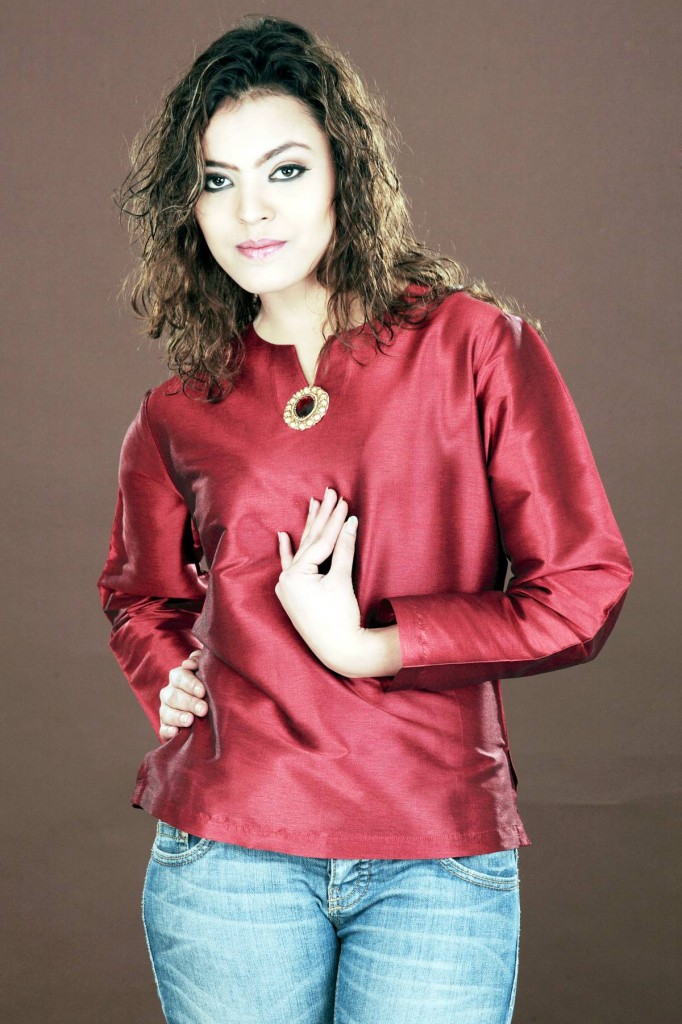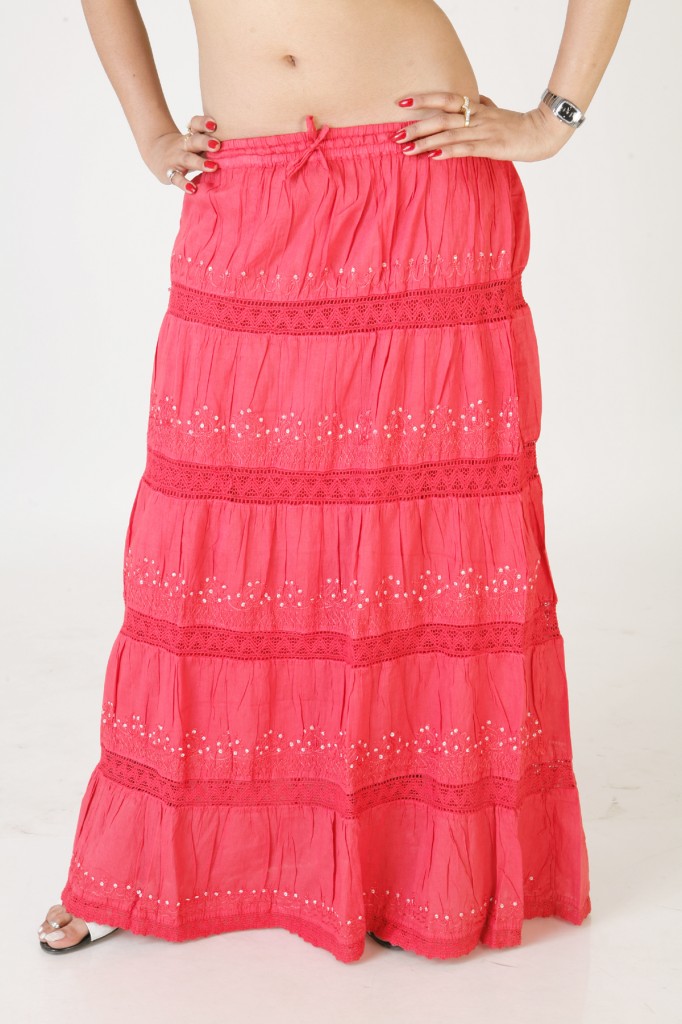I always enjoy having my preconceptions challenged and I had a nice moment while visiting the website of a U.S. company, East Essence, that sells clothes for Muslim women.
They offered some of what I expected, such as traditional clothing and hijabs:

And also some things I didn’t expect:


The fact that the website includes traditional and modest clothing, and also models wearing tight jeans and revealing their midriffs, challenges the notion that Muslim women always dress according to strict rules, as well as the ideas that all Muslim women dress alike or that any given Muslim women dresses the same from day to day.
For more on Muslim fashion, see our posts here, here, here, and here.
Lisa Wade, PhD is an Associate Professor at Tulane University. She is the author of American Hookup, a book about college sexual culture; a textbook about gender; and a forthcoming introductory text: Terrible Magnificent Sociology. You can follow her on Twitter and Instagram.
Comments 40
Restructure! — December 27, 2009
My first reaction was, "You don't know many Muslim women, do you?" Muslim women are really diverse, and "wearing jeans" is not something unusual.
But I think your post others Muslim women and makes them into some kind of specimen to examine and interpret. It's somewhat annoying when a person of an un-marginalized group makes a post about "Today I made a discovery about this marginalized group," as if your personal ignorance and enlightenment trump the lived experiences of the marginalized groups and the facts they take for granted.
Meera — December 27, 2009
I was also rather surprised about the surprise over this, as expressed in the original post. (Although, granted, many websites selling 'Muslim clothing' feature a more-narrow range of styles.)
The clothing shown here doesn't even cover the whole range of clothing I see worn by Muslim students on a daily basis on my (Canadian) campus -- everything from niqabs (and, occasionally, even full burqas) to body-hugging fashions not culturally marked as Muslim.
Emily — December 27, 2009
I actually respect this post, as honest as it is. Living in the Southern United States, I don't have much exposure to Muslim women; but I love challenging and learning my misconceptions of their culture especially from a feminist point of view. Although this post is very simplistic in nature, I think it really expels some common views of Muslim women. It forces one to understand that western culture is not the only culture or only point of view to have, and super inspiring to learn more. The only problem I have with this post is that it is from a very Western point of view, making it a little shallow. Like, "Oh! Muslim women are a lot like American women! Fantastic, now I understand them".
Kat — December 27, 2009
@ A.O.: Oh, nice, finally an arbitrator on what is 'European' or not! And it's an American! Cute! Facepalm.
intet — December 27, 2009
Honestly, as others have said, I'm more surprised that someone would be surprised to learn that muslim women wear jeans.
I think this post might say more, sociologically, about the images of "muslims" common to the cultural context of the person who posted it, than it says about "muslim women and fashion". Perhaps that should have been the subject of the post?
Still, I'm glad this was posted. Examining ideas about "muslims" in the US and in Europe is very important, especially considering the rise of extreme right-wing parties -- mostly nationalistic, sometimes explicit fascist, always islamophobic -- in many European countries.
jmtorres — December 27, 2009
Huh--query, the women in the "traditional" stuff look to be darker-skinned than the women in the jeans/bare midriffs. Is that representative of the site in general? If so, what does it imply?
Interrobang — December 27, 2009
I've seen pictures of South Asian Muslim women who are dressed pretty much exactly the same as other South Asian women (I don't remember specifically where, sorry), including short sleeves. The major difference was that they wore dupattas draped over their heads.
kristyn — December 27, 2009
I used to live in an area with a high muslim population, and I currently attend a University with many Muslim women. Muslim women are fairly diverse in what they wear- even the women who wear very traditional burqas often wear beautiful makeup or clothing underneath. A lot of the university students who are muslim dress pretty much like any other 20-something student type- jeans, t-shirts, etc. Many of the younger, more moderate women choose not to wear a headscarf at all. I debate against a lot of South-East Asian Universities, and most of the women from Malaysia/Indonesia do not wear a headscarf. Those who do, are usually very fashion forward (in my opinion anyway) in how they accessorise their garments. There was a muslim girl in one of my classes last year and I was always so envious about how well she dressed and worked her hijab into her outfit, which was often very tight and formfitting. Conversely, I have seen muslim women without headscarves who dress very naff. The point is- a Muslim woman's clothing is like any woman's clothing - some dress conversatively, others moderately, and others dress like skanks. Some wear traditional clothes, others do not. Some care about couture fashion, others could care less. :)
Simone — December 27, 2009
Yeah, I don't think it's surprising that Muslim women wear tight jeans or tummy-bearing outfits. What's more interesting, I think, is that fact that modest clothes appear in the the same catalogue as no-so-modest ones. I'm not surprised that a range of looks is being marketed to Muslim women, but I am definitely intrigued by the variety of options presented by this one vendor.
Does that make any sense at all?
Also, in Lisa's defense, these imagines are NOT typical of the images of Muslim women typically presented in the American media. No, I don't love the done of the post, but I think these images could be very valuable in a sociology class, and were definitely worth posting.
Simone — December 27, 2009
Yeah, I don't think it's surprising that Muslim women wear tight jeans or tummy-bearing outfits. What's more interesting, I think, is that fact that modest clothes appear in the the same catalogue as no-so-modest ones. I'm not surprised that a range of looks is being marketed to Muslim women, but I am definitely intrigued by the variety of options presented by this one vendor.
Does that make any sense at all?
Also, in Lisa's defense, these imagines are NOT typical of the images of Muslim women typically presented in the American media. No, I don't love the done of the post, but I think these images could be very valuable in a sociology class, and were definitely worth posting.
nakedthoughts — December 28, 2009
I clicked over and had a look. And like most fashion centered sites, it has some photoshop catastrophes. In many of the jeans shots, the women seem to have lost half the mass of their legs.
skinny = beauty = fuckability = worth.
great. more of the same.
SJL — December 28, 2009
I thought the bare midriff in the skirt photo was just to show where the garment hangs at the waist, not as an indication of how it would be worn in a complete outfit. Lots of catalogs do that: show pants and skirts with a bare midriff so you can see how they sit.
Kookaburra — December 29, 2009
I am glad for this post, because I discovered the wonders of the kameez and kurti this past summer, but the only shop in my town that carries them is a Tibetan imports store with really high prices and unpredictable stock/selection.
*bookmarks*
Jillian C. York — December 30, 2009
I've shopped around at a lot of stores that sell hijabs (and have a friend who runs one), and the thing that unifies most of them is that they're all fairly independent and low-budget. What that means here is that many of them simply "borrow" the clothing distributors' images because they don't have the money to do up their own or hire models. That explains the strange mix of modest and immodest images. See, both of the latter items are still modest if worn properly (e.g., the skirt with a long top), therefore would still be of interest to a "covered" Muslim woman (which is ultimately who this shop seems to be targeting).
That said, of course Muslim women dress in a variety of ways, but I'm guessing a woman who doesn't wear hijab has little reason to shop at a store for "Islamic clothing."
kelebek — January 1, 2010
Another thing to consider is the times a covered Muslim women is among other women. I wear a hijab and usually a long loose jacket when I am out and about. I only cover outside and when I am around men who are not my relatives. This means I am uncovered and free to wear whatever most of the time. I am not very fashion conscious so I usually wear jeans and t-shirts around home and friends. If I am going to a gathering of girlfriends I usually wear something nice under my jacket and make an effort to tame my hair because I will be taking off my jacket and scarf when I arrive.
Mark — January 3, 2010
Is no one going to say anything about that fact that the women in the first two photos are of clear Asian/Middle Eastern origin while the 3rd and 4th are white females? This website hasn't changed anything and the poster's own sudden realisation is appalling.
Aminah — March 10, 2010
FUCK EASTESSENCE
Mary — March 19, 2010
Salaam Alaykom
I am not sure why Lisa was surprised by the modest clothing being sold along side the immodest. I mean come on, Muslim women do go home and kick back and relax. Do you think that they produce large families by wearing colorless tents ALL day?
Most Muslim ladies (Sunnah) that I know wear really sexy outfits underneath the jilbab. And besides all that, you seem to be assuming that all the models used are Muslim. I don't think every Christian book, collectible, t-shirt, Crucifix is sold by a Christian.
Ok, let's assume that the model is Muslim, and she is showing her stomach in a picture... yes, that would be a major contradiction to her chosen religion.
Futile » Blog Archive » pictures of muslim women — June 4, 2011
[...] Muslim Women and Fashion В» Sociological Images Dec 27, 2009 … I've seen pictures of South Asian Muslim women who are dressed pretty much exactly the same as other … [...]
sunduk — December 22, 2023
Sunduk